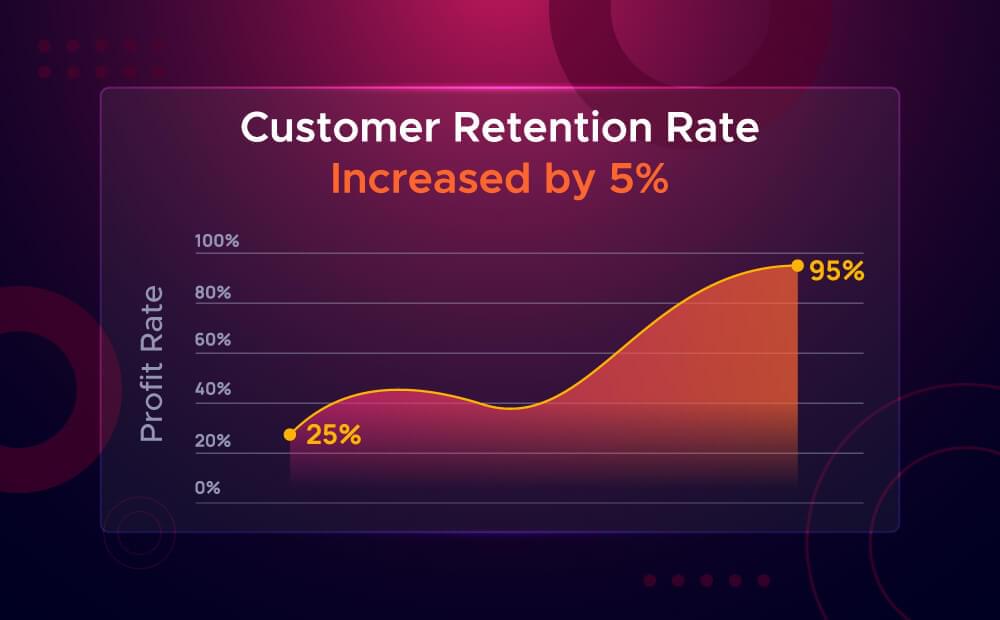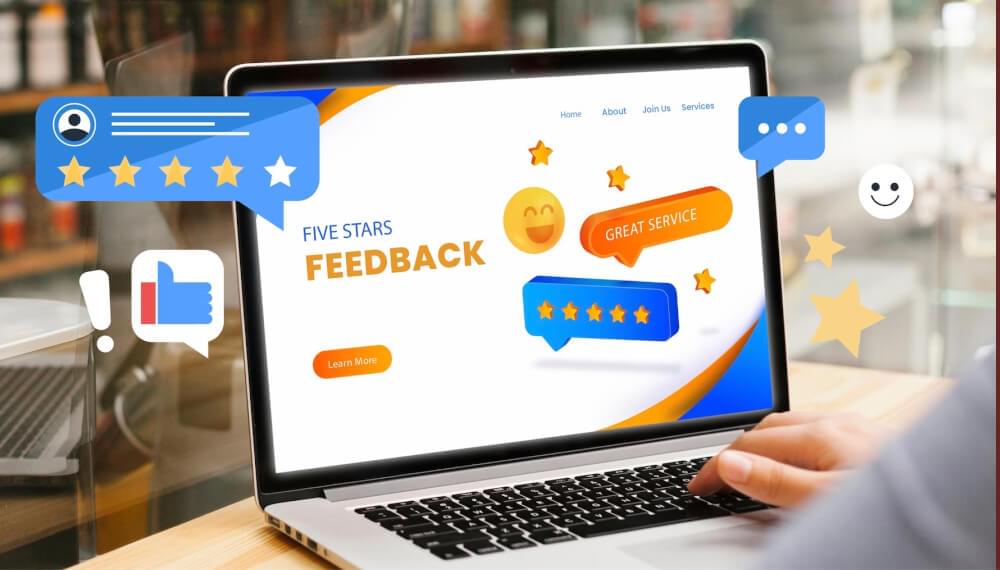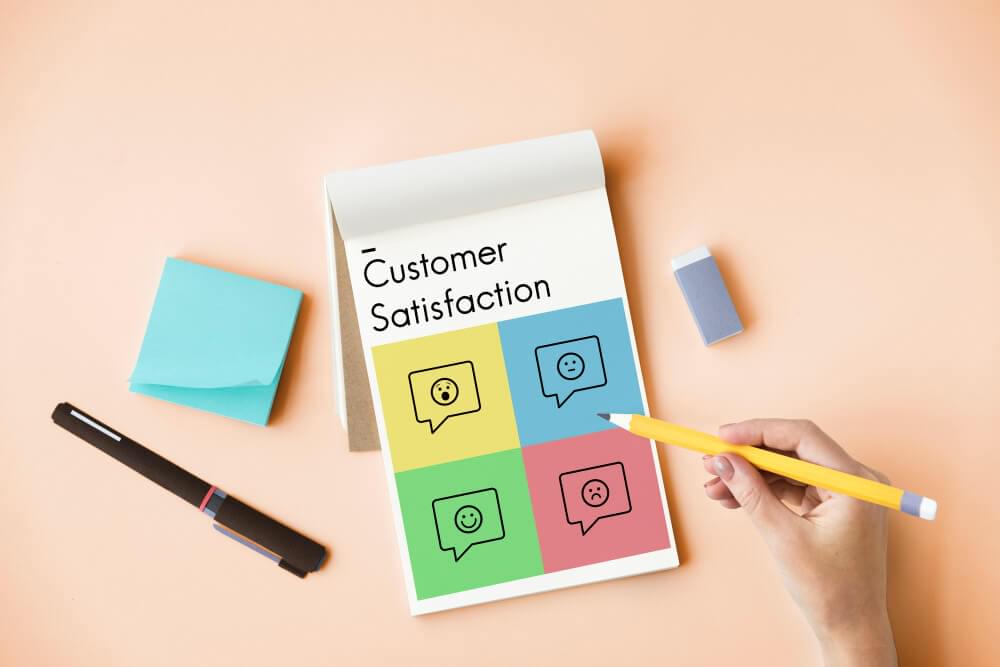
4 Ways to build Customer Loyalty in 2024 - B2B.

This blog is all about achieving customer loyalty for your SaaS product. If you have loyal customers, your business is never going down for sure. If your product is new or your product has a bad repo, don’t worry these tips will definitely help you build trust and customer loyalty.
Table of Contents
- What is Customer Loyalty?
- Types of Loyal Customers and their reasons to become loyal
- Why Client Loyalty is Important
- Why is it Important to Understand Customer Needs?
- How to Measure Customer Loyalty
- Factors Influencing Client Loyalty
- How to use Data to build Customer Loyalty
- How to Achieve Customer Loyalty for B2B Business
- Long-Term Customer Loyalty
- Bottom Line
- FAQs
What is Customer Loyalty?
Customer loyalty is achieved when your customer repeatedly buys your product for the long term. You need to satisfy your customers to encourage repeat purchases and make them choose you over competitors.
Customer loyalty is about the emotional connection your customers have with your brand. This connection often comes from consistent quality and great customer relationships with your brand. It’s more than repeat buying, it’s about making them feel that your brand is a part of them. For example, customers might stick with your software because of the quality service and features, not just because it’s cheap. Sometimes, they stay loyal because of a good customer experience and sometimes because you made them feel valued.
Related Read: What is the most direct cause of customer loyalty
Types of Loyal Customers and their reasons to become loyal
There are plenty of reasons why your customer sticks to your brand. If you have even a few of these qualities, you can get loyal customers. Below I’m going to describe some types of loyal customers:
Satisfied Customers:
These customers buy from your repeatedly because of complete satisfaction from you. They are satisfied with your product, customer experience and price.
You need everything perfect to keep these loyals.Advocates:
These customers are not only loyal but also actively promote the brand to others. They are your referrals. They would advertise your product and brand for free. You need them at every stage of your business.
To keep these advocates, you basically need a good product.Loyalty Program Members:
These are the kinds who love your loyalty programs. They will stick to you for rewards and offers.
It’s easy to keep these kind of loyals, you just need to have a good loyalty program.Emotional Loyalists:
We love these loyalists, because they still stick around even if your product is on the downside. These customers have emotional link with your brand and buy from you repeatedly. You can keep these customers loyal with a good customer experience.Price Loyalists:
They buy from you for your pricing and will switch if they find a relatively cheaper option with the same features and quality.Convenience Loyalists:
These loyals are into features of your product. These customers see the convenience that you offer.
You can build this customer base with a good UI/UX and fast features.
Why Customer Loyalty is Important
They are easy to convert. It’s easier to keep a customer than to acquire new one. But if we focus on customer loyalty only, will we make any new sales?
Yes! You will still make sales. A happy customer is like free advertisement. They will recommend your brand to everyone. But if your customer is not happy, you might lose the new ones with their reviews.
Businesses have a 60% to 70% chance of selling to an existing customer, while for a new prospect it’s just 5% to 20%. (Forbes)
The concept of customer loyalty is crucial for the long-term success of your business. Loyal customers not only buy your product repeatedly but also spend more and recommend your products to others. This leads to higher conversion rates and, consequently, higher profitability for you. Furthermore, loyal customers provide valuable feedback and are a source of regular and stable revenue.
The Wallet Allocation Rule shows that a brand’s rank relative to competitors is a strong predictor of share of wallet. This insight suggests that companies should compete hard to become the top choice for customers within their industry.
Lets learn more on how customer loyalty impacts revenue.
Impact on Revenue
The organizations’ key stakeholders are the loyal customers as they play a major role in determining the organizational revenues. CallMiner states ‘U.S. companies could save over $35 billion per year by focusing on keeping their existing customers happy. No matter how loyal a user is to brand, they will ultimately look for options if you don’t put in efforts to retain them. Businesses suggest that even a little improvement about 5% of customer retention rates can increase revenue by 25 to 95%.

Cost of Acquisition vs. Retention
According to Statistics, acquiring new customers is 25 times more expensive than retaining old ones. The processes applied to retain the existing customers are less costly compared to that of gaining new ones. For example while acquisition proves to be very expensive in issues such as marketing and advertising, retention can be done at a relatively cheaper way such as through loyalty programs or other forms of customer satisfaction.
Related Read: Customer Acquisition cost for SaaS
How to Measure Customer Loyalty?

You can measure customer loyalty through these five methods:
- Net Promoter Score (NPS): Ask customers how likely they are to recommend your business.
- Customer Retention Rate: Track the percentage of customers who stay with your business over a specific period.
- Repeat Purchase Rate: Measure how often customers make repeat purchases.
- Customer Satisfaction Surveys: Gather customer feedback on their experience and satisfaction.
- Customer Lifetime Value (CLV): Calculate the total revenue a customer is expected to generate over their relationship with your business.
Related Read: Gross vs Net Sales

How to Achieve Customer Loyalty for B2B Business
According to Churnfree, the most direct cause of customer loyalty is product experience. Following are the ways to achieve customer loyalty.

1. Improve Product Quality
For B2B businesses, customers prefer tools with a long trial period where they can test the quality of the product. The quality includes the features and accuracy of the service the tool provides. If the customer is satisfied with you product quality, most chances are that it will stay loyal to your brand.
One way to imporve the quality of your product is through rigorous testing and quality control to make sure your product meets customer expectations. Secondly, invest in research and developments to know the emerging trends beforehand.
Finally, the least you can do is collect feedback from your existing customers and improve the features accordingly.
2. Excellent Customer Service
Once the user has subscribed to your service, their second most concern is your customer service. Having a good customer service means responding and resolving the issues quickly. Companies who offer support 24/7 through modern means such as live chat or AI-powered chatbots create a solid trust base.To have an even better service, you can run feedback surveys on and off and improve your product.
Customer service plays a big role in customer retention management for new and existing customers as well.
Related Read: Customer Winback
3. Build your Brand Identity
Your brand identity includes the look, values, and personality of your brand. It makes your brand unique and memorable. When you create a brand identity that matches what your customers want, you build trust and stand out among your competitors. You can develop customer personas for this matter. These personas are detailed profiles that help you know who your customers are. When your brand identity fits your customer personas, you provide a personal and relevant experience. This connection makes your customers feel valued and keeps them coming back.
4. Focusing on Long-Term Relationships Than Short-Term Gains
In relationship marketing, the magic lies in forming long-lasting connections with prospects and customers. Unlike traditional sales tactics, relationship marketing prioritizes the overall brand experience. It’s not just about making a sale; it’s about creating an unforgettable journey for your customers. Focusing on their needs and desires can attract and retain customers for the long haul, resulting in repeated sales and increased client loyalty.
5. Addressing Customer Concerns
One of the keys to unlocking client loyalty is effective customer feedback management. You build strong connections with your customers when actively seeking and leveraging customer feedback. It’s like saying, “Hey, we care about what you think!” Listening to and valuing their opinions enhances the perception that their voices matter. Customers feel heard, respected, and appreciated, hence strengthening the bond with your brand.
You can use survey forms or cancel flow to get feedback from customers.
6. Empowering Employees to Build Strong Customer Relations

Empowering your employees means giving them the authority to tackle challenges on their own instead of micromanaging them. By doing so, you not only foster a happier customer base but also ensure your team’s satisfaction. When the employees feel supported and capable, they deliver exceptional customer service, leading to better overall outcomes for your business.
7. Sustaining Engagement

The relationship with your customers should not just be at the time of the purchase but should continue with the aim of keeping them engaged. So the first step is to gather customer feedback. This information can be utilised for targeting the customers and providing them with tailored messages and special offers. For instance, simple acts like sending free templates or sending specific can greatly increase interaction.
Moreover, when a brand is present on all the mentioned platforms equally, it increases your brand presence.
8. Adapting to Customer Needs

You cant expect your client to stick to your product out of emotional attachement, you need to grow and improve your product with time. Move ahead with the advancements like in 2024 every product has AI implemented into their features to ease users product usage. Morover you can make advancements to your customer service as well like using automation on live chat.
To keep up with emerging trends, you can regularly conduct market research and competitor analysis to stay informed about industry shifts. Engaging with social media platforms and attending industry events or webinars helps identify new trends early. Investing in continuous learning, such as certifications or workshops, allows businesses to adopt new technologies and strategies. Collaborating with influencers and thought leaders in the field can also provide insights into upcoming trends. Additionally, adopting data analytics tools enables tracking customer behaviors and preferences, allowing for proactive adjustments to stay ahead of trends.
By concentrating on such measures, one can maintain the customers’ interest in the brand in the long run and achieve net negative churn.
Bottom Line!
As we’ve seen, it’s not just about making sales; it’s about forging lasting connections with our customers. Loyal customers are more likely to make repeat purchases, refer others, and provide valuable feedback, boosting our brand’s reputation.
FAQs
What should you do to be successful and maintain client loyalty?
To be successful and keep your clients loyal, always provide excellent service, communicate clearly, and show you value them. Understand their needs and aim to exceed their expectations. Build trust and create strong relationships.
What are the four categories of customer loyalty?
The four categories of customer loyalty are attitudinal (emotional connection), behavioral (repeat actions), situational (influenced by circumstances), and price loyalty (driven by affordability).


